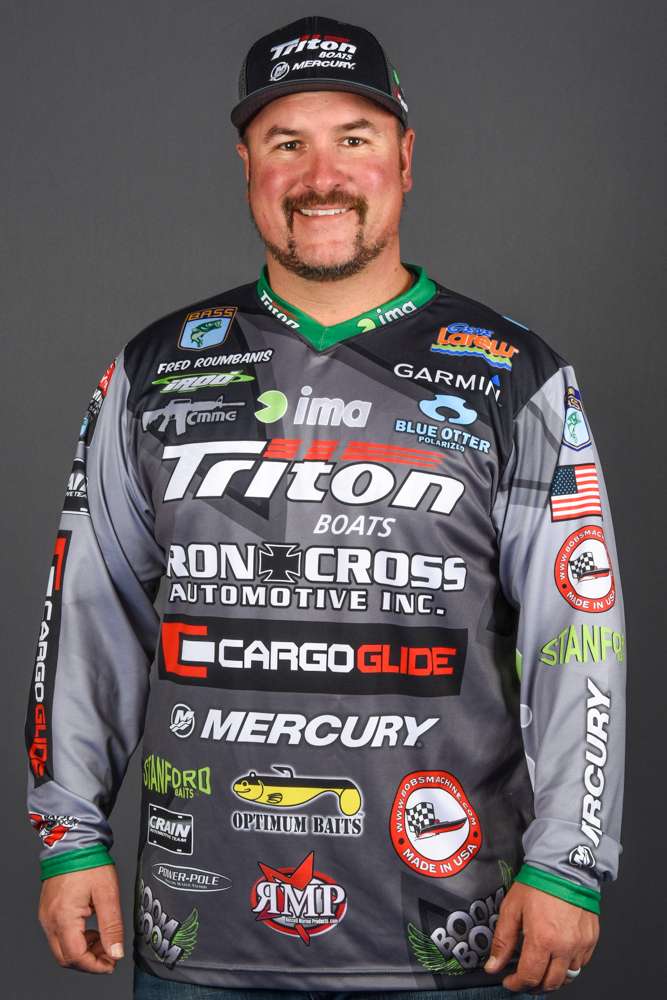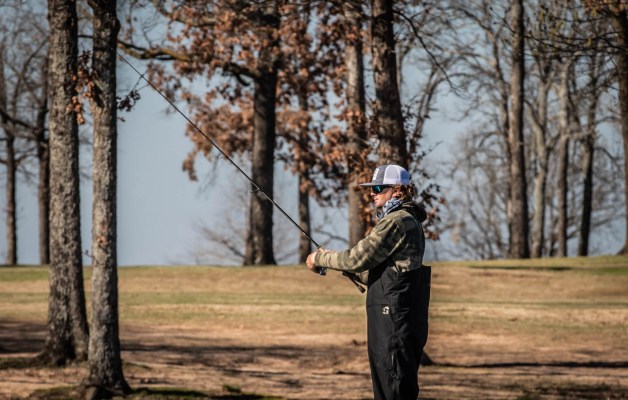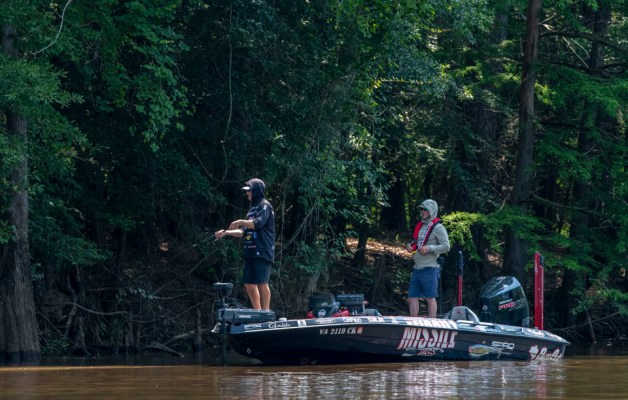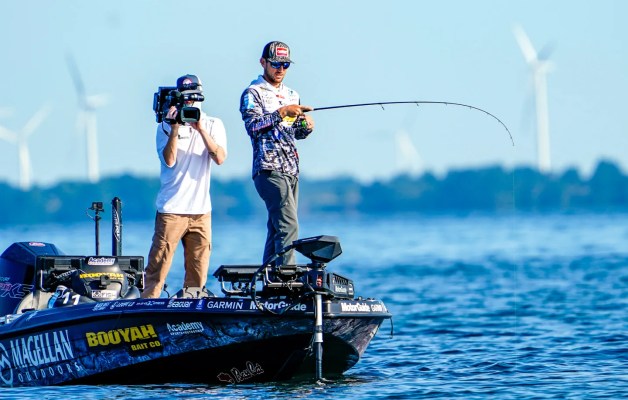Next to the jig and the spinnerbait, I think the most versatile bass lure is the lipless crankbait. You can burn it just under the surface, yo-yo it off the bottom or do anything in between. It will catch bass in all four seasons, in all 12 months and under just about any conditions you can think of. It’s why you’ll always find these lures in my boat, no matter where I’m fishing or when.

My favorite lipless crankbait is the IMA Rock N’ Vibe. It’s a Japanese bait that weighs 1/2-ounce, has a wide head and carries a smaller belly hook than a tail hook — which is unusual for a lipless crank. More on that another time. Right now I want to tell you about fishing lipless crankbaits on different types of line and why your line choice is probably the most important decision you make when you fish a lipless crankbait.
Monofilament
I grew up fishing monofilament with just about everything — it’s what we had — and it’s still the best choice for certain types of lipless crankbaiting. I especially like to use mono in the early spring when I’m using lipless crankbaits on lakes with lots of vegetation.
The primary reason mono is the right choice here is its buoyancy. Unlike fluorocarbon, it doesn’t sink, and it’s less visible than braid.
Because of its buoyancy, monofilament “floats” your bait a little higher in the water column, and this is important when you’re fishing a lipless crankbait over the early season grass. I use P-Line C21 Copolymer for this and sometimes go as heavy as 20-pound-test if I want to keep my bait up really shallow.
Remember, the heavier the mono, the higher your bait will ride in the water column.
Braid
When I’m fishing around grass that’s getting thicker, and I want to crash my Rock N’ Vibe into the cover and rip it loose, it’s time to spool up some P-Line Spectrex Braid. Braid has no stretch, so when my bait hangs in the grass I can easily rip it loose with my rod tip.
That’s when the strike comes — just as the bait pulls free with a burst of speed. Bass can’t resist it, and you can accomplish this much more easily with a no-stretch line like braid than you can with monofilament (which stretches a lot) or fluorocarbon (which stretches a little). Braid will give your bait better acceleration, and that makes a big difference. I usually go with 30-pound-test; it’s thin enough to give me plenty of casting distance and strong enough to pull my bait free from just about anything.
Fluorocarbon
If I’m fishing a lipless crankbait in more open water — like around riprap or when I’m covering a lot of water on shallow flats and banks — I use P-Line Ultimate Fluorocarbon, usually in 10- to 16-pound-test.
As you know, fluorocarbon sinks and has little stretch, but those aren’t the biggest reasons I like it for this application. I go with fluorocarbon at these times because it’s super clear, with about the same refractive qualities as water, so the fish can’t see it as well. That can be important in clear water situations with any lure.
Rods and reels
Although my line choices for lipless crankbaits might seem a little complicated, my rod and reel choice is simple. I use the same combo for all my lipless crank fishing.

My rod of choice is the iRod Air Series 754 casting rod. It’s a 4 power rod that’s 7 feet, 5 inches long with enough tip action to make long, accurate casts and enough backbone to set the hook at the end of one of those casts or to rip my bait from heavy grass.
My reel is an Ardent Edge with a 7.2:1 gear ratio. A fast reel like that is critical if you want to maintain “feel” with your lipless crankbaits. A slower reel can cause you to lose touch with the bait, and when you can’t feel it, you just can’t fish it properly.
I’ve almost always got an IMA Rock N’ Vibe tied onto one of my outfits, whether I’m fishing a tournament or just out for fun. Lipless crankbaits are that versatile and that effective. If you’ll take my line advice into consideration the next time you’re on the water, I think you’ll improve your lipless crankbait fishing.





